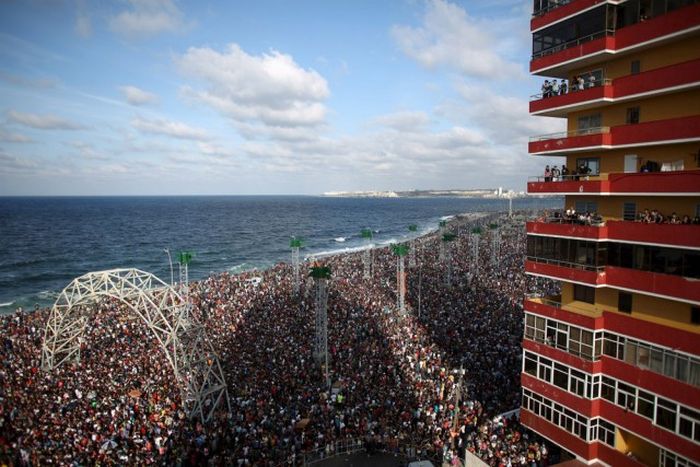|
|
Lifa In Cuba
|
Cuba developed slowly and, unlike the plantation islands of the Caribbean, had a diversified agriculture. But what was most important was that the colony developed as an urbanized society that primarily supported the Spanish colonial empire. By the mid-18th century, its colonists held 50,000 slaves, compared to 60,000 in Barbados; 300,000 in Virginia, both British colonies; and 450,000 in French Saint-Domingue, which had large-scale sugar cane plantations.
The Seven Years' War, which erupted in 1754 across three continents, eventually arrived in the Spanish Caribbean. Spain's alliance with the French pitched them into direct conflict with the British, and in 1762 a British expedition of five warships and 4,000 troops set out from Portsmouth to capture Cuba. The British arrived on June 6, and by August had Havana under siege. When Havana surrendered, the admiral of the British fleet, George Keppel, the 3rd Earl of Albemarle, entered the city as a conquering new governor and took control of the whole western part of the island. The British immediately opened up trade with their North American and Caribbean colonies, causing a rapid transformation of Cuban society. They imported food, horses and other goods into the city, as well as thousands of slaves from West Africa to work on the under developed sugar plantations.
Though Havana, which had become the third-largest city in the Americas, was to enter an era of sustained development and increasing ties with North America during this period, the British occupation of the city proved short-lived. Pressure from London sugar merchants, fearing a decline in sugar prices, forced negotiations with the Spanish over colonial territories. Less than a year after Britain seized Havana, it signed the Peace of Paris together with France and Spain, ending the Seven Years' War. The treaty gave Britain Florida in exchange for Cuba. The French had recommended this to Spain, advising that declining to give up Florida could result in Spain instead losing Mexico and much of the South American mainland to the British. Many in Britain were disappointed, believing that Florida was a poor return for Cuba and Britain's other gains in the war.
The real engine for the growth of Cuba's commerce in the late eighteenth and early nineteenth century was the Haitian Revolution. When the enslaved peoples of what had been the Caribbean's richest colony freeing themselves through violent revolt, Cuban planters perceived the region's changing circumstances with both a sense of fear and opportunity. They were afraid because of the prospect that slaves might revolt in Cuba, too, and numerous prohibitions during the 1790s on the sale of slaves in Cuba that had previously been slaves in French colonies underscored this anxiety. The planters saw opportunity, however, because they thought that they could exploit the situation by transforming Cuba into the slave society and sugar-producing "pearl of the Antilles" that Haiti had been before the revolution. As the historian Ada Ferrer has written, "At a basic level, liberation in Saint-Domingue helped entrench its denial in Cuba. As slavery and colonialism collapsed in the French colony, the Spanish island underwent transformations that were almost the mirror image of Haiti's." Estimates suggest that between 1790 and 1820 some 325,000 Africans were imported to Cuba as slaves, which was four times the amount that had arrived between 1760 and 1790.
|
|









